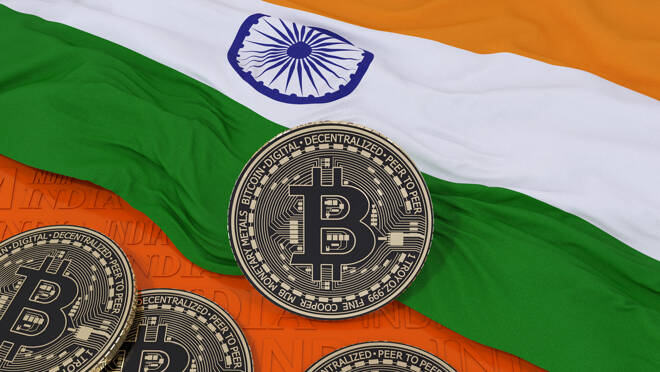Advertisement
Advertisement
India’s CBDC ‘Digital Rupee’ To Be Issued by 2022–2023, Says MoF
Updated: Feb 1, 2022, 13:42 GMT+00:00
While the specifics of the issuance and regulation are yet to be revealed, the Ministry did not declare any regulations concerning crypto assets either.
As the budget for the fiscal year 2022-2023 was presented today at the Parliament, the government of India announced some headline-making developments, and at the top of it was the pronouncement of the Central Bank Digital Currency of India.
The Digital Rupee
The use of Central Bank Digital Currencies (CBDCs) is still an ongoing discussion and while a few countries around the globe have begun testing or deploying gradually, it hasn’t yet been considered as a replacement for fiat yet.
Instead, it has been seen as an additional alternative for the citizens as the demand for crypto-based projects has been growing. With CBDCs the factor of decentralization does disappear but it opens up the path for possible acceptance of other blockchain-based currencies.
In line with that sentiment, Nirmala Sitharam, the Minister of Finance and Corporate Affairs, India, today officially announced the issuance of the country’s CBDC – the “Digital Rupee”. She stated:
“Introduction of a Central Bank Digital Currency will give a boost to the Indian economy”
The digital currency will be issued by the Reserve Bank of India (RBI) and the expected date has been given for this fiscal year. Adding on to the same Sitharam iterated:
“Digital currency will also lead to a more efficient and cheaper currency management system. It is therefore proposed to introduce ‘Digital Rupee’ using blockchain and other technologies to be issued by the Reserve Bank of India starting 2022 – 23”
Not only was the CBDC announced but the government also announced a 30% tax on crypto assets-based income. She said:
“Accordingly, for the taxation of virtual digital assets, I propose to provide that any income from transfer of any virtual digital asset shall be taxed at the rate of 30 per cent”
Furthermore, a 1% TDS was also levied on payments over a certain threshold, made using virtual digital assets which will also act as a transaction tracking mechanism.
The CBDC Race
While India is yet to issue the CBDC, there are countries that have already been a step ahead and successfully operating CBDCs. The 9 countries that have already implemented digital currencies include Nigeria and The Bahamas.
Many other countries are still in the pilot stages including China and South Korea while the likes of Japan and Russia are in the development stages yet.
Thus considering the pace at which CBDCs are being adopted it won’t be any more than 3-4 years before the majority of the countries in the world would have launched their own digital currencies.
About the Author
Aaryamann Shrivastavaauthor
Holding a Mass Media Degree has enabled me to better understand the nitty-gritty of being a journalist and writing about cryptocurrencies’ news and price movements, effects of market developments, and the butterfly effect of individual assets nurtured me into a better investor as well.
Advertisement
